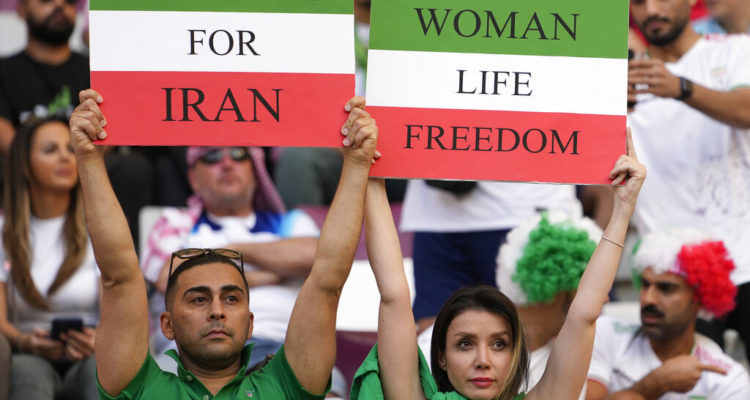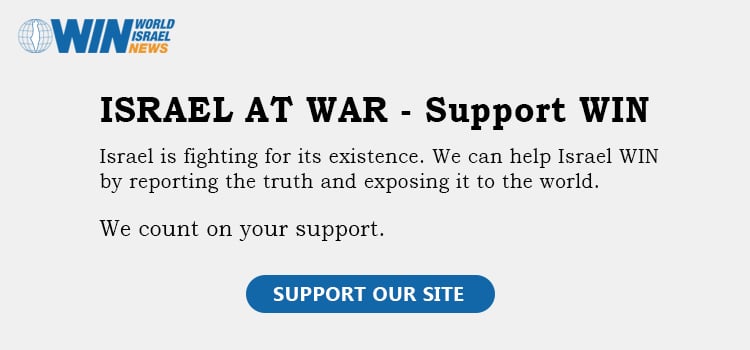Iranians view the various terror proxies, along with the regime’s destructive regional policies, as the root causes of their economic hardships and Iran’s political isolation within the international community.
By Dr. Farhad Rezaei, Frontpage Magazine
The Islamic Republic’s proxy war against Israel is well-known. Yet, less understood is the strong support for Israel among the Iranian people in its conflict with Palestinian terrorist groups such as Hamas and Islamic Jihad (PIJ) and Lebanese Hezbollah.
This paradoxical stance, puzzling to many observers, reveals a complex interplay of social and political factors. At its core, this support highlights a significant public sentiment against the Islamic Republic’s regional policies and proxy wars with Israel.
On October 7, 2023, Hamas and PIJ terrorists carried out a brutal attack against Israeli civilians, killing over 1,200, including infants, toddlers, and women, with expert sadism. They also took 150 civilians hostage, ranging from babies to Holocaust survivors in wheelchairs.
In response to this savage massacre, Israel initiated a counterattack against the terrorists to eliminate the terror groups.
However, Israel’s retaliation drew global condemnation and incited violent actions by many Muslims against Jews in various countries, including the United States.
Surprisingly, many Iranians, both publicly and on social media, expressed sympathy and support for Israel and urged the Israeli government to eliminate Hamas, Hezbollah and the Islamic Jihad.
This raises the question of how the Iranian regime can sponsor terrorism against Israel while the Iranian people publicly support Israel and advocate for the elimination of groups such as Hamas, Hezbollah, and Islamic Jihad, all of which are sponsored by the regime.
This paradoxical stance reveals a complex interplay of social and political factors, which this article aims to explore.
First of all, majority of Iranians regard groups like Palestinian Hamas and PIJ, and Lebanese Hezbollah as sources of their country’s political isolation and economic hardship.
To understand the origins of this perspective, it is imperative to explore the Iranian regime’s costly and irrational proxy wars against Israel.
When Ayatollah Ruhollah Khomeini, the founding father of the Islamic regime, came to power in 1979 in Iran, he vowed to fulfil its “sacred mission” of spreading the Islamist revolution in the Middle East.
Two nations emerged as targets of the new regime: Saudi Arabia and Israel. Tracing the logic of the anti-Saudi animus was easy. The Saudi Kingdom was central in the world of Islam and Khomeini wanted to undermine it.
However, the origin of the hostility to Israel was not clear. There was nothing in the traditional Shia tradition to indicate an even passing interest in the subject of Jerusalem, the Palestinians, or the Jews.
Khomeini declared that liberation of Jerusalem and destroying the State of Israel are the pre-requisite of the return of the Mahdi. To sacralize the struggle, Khomeini and numerous regime representatives had begun referring to Israel as the “Little Satan.”
Although Khomeini declared Israel to be a “fake power” and boasted that his regime “will eliminate this fake power,” the new regime realized that they could not win a conventional war against it because of the huge disparity in power.
Thus, the regime developed the winning strategy of creating and sponsoring a network of nineteen Shia and Sunni terrorist organizations in neighboring countries to fight Israel.
In 1982 the Islamic Revolutionary Guards Corps (IRGC) created Hezbollah in Lebanon, followed in the early 2000s by several Iraq militias under the banner of Hashd al Shaabi, the Houthis in Yemen and finally, the Shia Liberation Army (also known as the Shia Legion) in Syria.
The regime also funded, armed, and trained Sunni groups such as Hamas and the PIJ to engage in conflict with Israel from multiple fronts.
To support its proxies, the regime has made enormous investments, including providing them with cash and expensive military equipment.
This has diverted massive resources from the domestic sphere, where they were desperately needed.
No estimate exists as to how much the regime has spent on propping its proxy empire, but western intelligence services estimated that Hezbollah alone receives up to $830 million annually.
The regime has spent over $30 billion in Syria to keep President Bashar al-Assad in power. This is in addition to the $12 billion credit line between Tehran and Damascus.
Secret letters found during the Gaza war show the Iranian government’s significant financial support for the Palestinian Islamist group Hamas totaling at least $222 million between 2014 and 2020.
There are reports suggesting that Iran provided Hamas with an extra monthly financial support of $30 million in exchange for information on Israel’s missile capabilities and missile locations.
Although oil-rich, today Iran’s economy is adversely impacted by the revolutionary export project, most notably in terms of standards of living, inadequate investment in infrastructure, and environmental degradation.
Hard economic indicators such as the unemployment rate, the devaluation of the national currency, and inflation paint a grim picture.
The inflation rate stands at 52 per cent, the overall unemployment rate is over 18 per cent, and youth unemployment is reached 27 per cent.
It is not surprising, then, that Iranians are among the most angry nations in the world. The constant economic pressures and social restrictions serve as significant stressors that can heighten feelings of frustration and anger among the population.
Dissatisfaction with the deteriorating standard of living has triggered periodical riots where the crowd chanted slogans against wasting money on foreign adventurism and on the terrorist proxies.
In 2018, the protesters chanted “Leave Syria [alone]. Think about us,” “No Gaza, No Lebanon, I will die for Iran,” and “Death to Palestine.” Protesters said they do not want the regime to spend their money on terrorist proxies like Hamas, PIJ, and Hezbollah.
Today, Iranians show support for Israel on social media, advocating for the elimination of these groups because they view them as sources of their national troubles.
Additionally, another significant factor influencing Iranians’ perspectives towards Israel is their view of Palestinian accountability.
Palestinians have missed multiple opportunities for peace with Israel, which has led to frustration throughout the Muslim world, including in Iran. Many Iranians believe that Palestinian leaders are not genuinely interested in achieving peace.
This belief is not entirely unfounded. As I wrote elsewhere, during the Oslo and Madrid peace talks in the early 1990s when Israelis were engaged in peace talks, Palestinian leaders derailed these negotiations.
At the Camp David II summit, Israeli Prime Minister Ehud Barak offered significant concessions, including nearly reverting to the 1967 borders, establishing a Palestinian state with its capital in Abu Dis, and shared control over the Holy Basin, but Yasser Arafat declined the offer.
This history leads Iranians to question why they should suffer the consequences of the Palestinian leadership’s repeated mistakes, particularly since even Arab nations of the Middle East increasingly refuse to bear Palestinians burden.
Moreover, the Iranian people hold a negative view of the Palestinian terrorists use of inhumane tactics in the conflict.
Groups like Hezbollah, Hamas and PIJ are known to use civilians as human shields in their conflict with Israel, aiming to garner global sympathy and condemnation of Israel.
On social media, many Iranians argue that “true support for the Palestinians should begin with unequivocal condemnation of Hamas and PIJ for their use of civilians as shields; failing to do so only plays into the strategies of the Islamic Republic.”
Support for Israel among Iranians can also be seen as a form of public protest against their own regime’s domestic policies. Since late 2017, Iran has witnessed multiple significant protests driven by grievances over social, economic, environmental, and political issues.
The Iranian regime has consistently responded to these uprisings with severe repression.
For instance, during the protests that spanned from late 2022 into early 2023, security forces of the regime were reported to have killed at least 522 individuals—estimates by some sources reach as high as 5,000.
Additionally, over 1,000 people were reportedly blinded by pellet guns, and more than 20,000 were detained. In a previous wave of protests in 2019, the crackdown resulted in the deaths of 1,500 protesters, which included 17 children and 400 women.
Given this harsh crackdown on protesters, many Iranians view the regime as an adversary.
Consequently, there is a growing sentiment among the population that any entity opposed by the regime, including foreign nations like Israel, could be considered potential allies.
This perspective is further solidified by the regime’s consistent opposition to countries and groups that challenge its policies, leading many Iranians to seek solidarity with these opposing countries as a form of resistance against the regime’s oppressive tactics.
In sum, it is not surprising that many Iranians support Israel in its conflict with terrorist groups such as Hezbollah, Hamas and the PIJ. Iranians are displeased with their regime’s sponsorship of these groups at the expense of the Iranian people.
They view these groups, along with the regime’s destructive regional policies, as the root causes of their economic hardships and Iran’s political isolation within the international community. Therefore, their support for Israel reflects their opposition to the regime’s regional policies.





